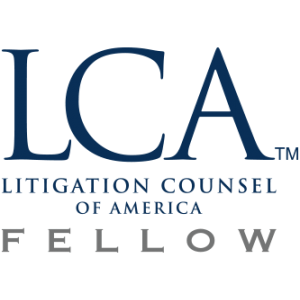Following Too Closely in New York: How Tailgating Leads to Serious Car Accidents
Tailgating, or following another vehicle too closely, is a common driving behavior that can lead to severe car accidents. Despite being avoidable, this aggressive driving habit is responsible for countless rear-end collisions and injuries every year, especially on New York’s busy roads. Understanding what tailgating is, why it is so dangerous, and the legal implications involved can help you protect yourself and your loved ones. If you’ve been injured in an accident caused by a tailgating driver, Denlea & Carton LLP is here to provide skilled legal representation and fight for the compensation you deserve.
What Does “Following Too Closely” Mean in New York?
Tailgating is when you follow the car in front of you too closely, and it’s a risky habit that can lead to serious accidents. When you’re too close to the vehicle ahead, you don’t have enough time to react if something goes wrong, which can easily result in a crash. In New York, tailgating is a common cause of accidents, especially in these situations:
- A driver is tightly trailing another car during stop-and-go rush hour traffic.
- Speeding closely behind a vehicle on highways while weaving between lanes.
- Following within mere feet of a vehicle in poor weather conditions, impairing visibility and stopping ability
Tailgating can lead to rear-end collisions, causing injuries like whiplash, broken bones, or even head trauma. It’s not just about the physical harm – if you’re caught tailgating, you could face legal trouble, including being held liable for the damages, fines, and higher insurance rates. So, it’s crucial to keep a safe distance to protect yourself and others on the road.
How Tailgating Causes Serious Accidents
Tailgating is a major cause of serious accidents because it cuts down the time a driver has to react if the car in front suddenly brakes. Rear-end collisions from tailgating are some of the most common crashes and often lead to serious injuries, such as:
- Whiplash and neck strain from the sudden impact.
- Back injuries, including herniated discs or fractures.
- Concussions and other traumatic brain injuries.
- Broken bones or fractures in the arms, legs, or ribs.
- Soft tissue injuries, such as ligament tears or bruises.
Tailgating is even more dangerous when it involves large trucks. Trucks take much longer to stop and have big blind spots, making it harder for drivers to see what’s ahead. Crashing into a truck can cause catastrophic injuries or even fatalities, as the sheer size and weight of the truck can make the crash much worse. Keeping a safe distance from all vehicles, but particularly large trucks, is critical to avoiding such damaging consequences.
Understanding New York Tailgating Laws
Tailgating is illegal in New York and is treated as a traffic violation under state law. The law requires drivers to keep a safe distance from the vehicle ahead to help prevent car accidents. If you’re caught tailgating, you could face fines, points added to your driver’s license, and higher insurance premiums.
According to New York Vehicle and Traffic Law Section 1129, drivers are not allowed to follow another vehicle “more closely than is reasonable and prudent,” based on factors like traffic speed and road conditions. This law is designed to encourage safe driving and reduce the chances of accidents caused by tailgating. Essentially, it emphasizes that drivers should be able to stop safely if the car in front of them suddenly slows down or stops. Tailgating is seen as reckless and negligent behavior, as it significantly increases the risk of rear-end collisions. Whether you’re driving in heavy traffic or on an open highway, maintaining a safe distance gives you more time to react and helps ensure the safety of everyone on the road.
Who Is at Fault in a Tailgating Accident?
Determining who is at fault in a tailgating accident often starts with the presumption that the driver of the trailing vehicle is responsible. Under New York law, rear-end collisions are typically seen as the result of the trailing driver failing to maintain a safe following distance. This presumption of liability is based on the notion that safe driving requires allowing enough space to react to sudden stops. However, there are exceptions, such as when the leading driver makes an abrupt, unpredictable stop or acts negligently in another way. Despite this, establishing fault can become especially complex, requiring detailed evidence and expert analysis.
If you’re being blamed for a rear-end collision in New York, contacting Denlea & Carton LLP can be essential in protecting your rights and helping you avoid unfair liability. We can use several strategies to challenge the presumption of fault and build a strong defense for you, such as:
- Reviewing dashcam footage or traffic camera images to show exactly what happened before the crash.
- Gathering witness testimonies to back up your version of events.
- Analyzing police reports to identify any inaccuracies or details that might help your case.
- Working with accident reconstruction experts to explain the details of the collision and provide evidence that you weren’t at fault.
- Examining cellphone records or other evidence to check if the other driver was distracted or contributing to the accident.
Our skilled personal injury lawyers at Denlea & Carton LLP can help prove that you’re not responsible for the crash, and they’ll work to ensure you’re treated fairly and that you aren’t unfairly held liable for damages.
Tips for Avoiding Tailgating Accidents
Avoiding tailgating accidents requires vigilance and adopting safe driving habits that prioritize the well-being of everyone on the road. To help prevent such incidents, follow these practical tips:
- Follow the three-second rule to keep a safe distance between your car and the one ahead.
- Leave extra space in bad weather like rain, snow, or fog, when stopping takes longer.
- Stay focused—avoid distractions like texting, eating, or adjusting the radio while driving.
- Use cruise control when it’s safe to do so, especially on highways, to maintain a steady speed and avoid creeping up on other drivers.
- Watch traffic patterns ahead so you can slow down gradually instead of braking hard.
If someone is tailgating you, especially on New York roads, the best thing you can do is stay calm. Don’t engage or brake suddenly—that can make things worse. Instead, if it’s safe, move to another lane and let them pass. If the driver continues to act aggressively or puts others at risk, try to note the vehicle’s make, model, and plate number, and report it to local authorities.
Why You Need a Personal Injury Attorney After a Tailgating Accident
A tailgating accident can leave you dealing with serious injuries, mounting medical bills, lost income, and emotional distress. Proving negligence is critical to holding the at-fault driver accountable and securing the compensation you rightfully deserve. This process often involves complex legal and technical aspects, like gathering evidence, negotiating with insurance companies, and presenting a strong argument for your claim, and trying to handle it all on your own can put your recovery and your future at risk.
At Denlea & Carton LLP, we are dedicated to helping New Yorkers who have been injured in tailgating accidents. Our experienced team understands how to build a compelling case that demonstrates the other driver’s responsibility, whether through analyzing evidence, leveraging expert resources, or negotiating aggressively on your behalf. We work tirelessly to achieve the compensation you and your family need to move forward after this difficult time. If you or a loved one has been harmed in a tailgating collision, reach out to us today to discuss your situation and how we can advocate for your best interests.


















